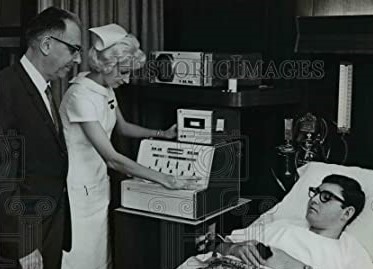ADVERTISEMENT
EMS Hall of Fame: The Pioneers of Prehospital Care—Criley, Rose
The short history of EMS has been driven by the wisdom, foresight, and innovation of countless individuals. As the field ages into its second half-century and its origins fade to the past, it’s worth commemorating the greatest pioneers of prehospital emergency medical services. This series honors these trailblazers.
Leonard Rose
Oregon Coronary Ambulance Project
A cardiologist and combat veteran, Leonard Rose, MD, came to Portland, Ore., in 1955 to practice at Good Samaritan Hospital, where he placed the first pacemaker in a patient in 1958 and developed a mobile resuscitation cart that brought defibrillation to patients in 1961.
Aware of the work of Frank Pantridge and others, Rose wanted to train ambulance attendants to use portable defibrillators. In 1969 he joined with a local service, Buck Ambulance, for the Oregon Coronary Ambulance Project, which trained Buck personnel in ECG interpretation, CPR, and defibrillation and equipped them to take the care to the field.
The program started slowly but found initial success and took off. Portland subsequently had the first out-of-hospital cardiac save by a nonphysician crew (which included Roger Fox, later the first president of NAEMT), and of 14 patients cited in a 1972 JAMA review of the project, half survived to hospital discharge.
Rose was born in 1919 in New Jersey and earned his MD from Georgetown in 1943. He served in the U.S. Army and fought at Okinawa during World War II and later with initial American forces in Korea. After the wars he sought further training in internal medicine and cardiology, including cardiac catheterization, and served at several VA hospitals as well as Johns Hopkins.
Rose’s coronary care efforts in Portland, which helped lead to Oregon’s statewide EMT system, cost just $36,000, compared to hundreds of thousands for similar programs elsewhere. He relocated to the San Diego area after retirement and died in 2005.
J. Michael Criley
Los Angeles County paramedic program
Today an emeritus professor of medicine and radiological sciences at UCLA’s David Geffen School of Medicine, John Michael Criley, MD, FACC, MACP, was a central figure in the development of the Los Angeles County Fire Department’s paramedic program in 1969.
A 1956 graduate of medical school at Stanford, Criley became an authority on cardiac hemodynamics, cardiac auscultation, cardiac catheterization, and valvar heart disease. He first explained and named mitral valve prolapse and discovered the technique of “cough CPR,” finding that a conscious, responsive person in arrhythmia, by repeatedly coughing hard, might be able to keep enough blood flowing to the brain to remain conscious for a minute or two to seek help. (Though not actually cardiopulmonary resuscitation or endorsed by the AHA, the technique has shown benefit in a number of case reports; Resuscitation rounded them up in 2018.1)
Criley served as director of the cardiac catheterization laboratories at Johns Hopkins before returning to California to join the faculty at UCLA. In nearly five decades at Harbor-UCLA Medical Center, including more than two decades as chief of cardiology, Criley taught more than 200 cardiologists and taught cardiology to more than 6,000 students. Los Angeles County’s paramedic program began with six firefighters attending initial training there in August 1969. The Los Angeles County Paramedic Training Institute is now named in Criley’s honor.
He has published more than 100 research papers and authored or coauthored two textbooks and 29 chapters. In 2009 he was named one of the first Pioneers of Paramedicine.
Reference
1. Trethewey SP. Letter to the Editor: ‘Cough CPR’: Misinformation perpetuated by social media. Resuscitation, 2018; 133: e7–e8.
John Erich is the senior editor of EMS World.











